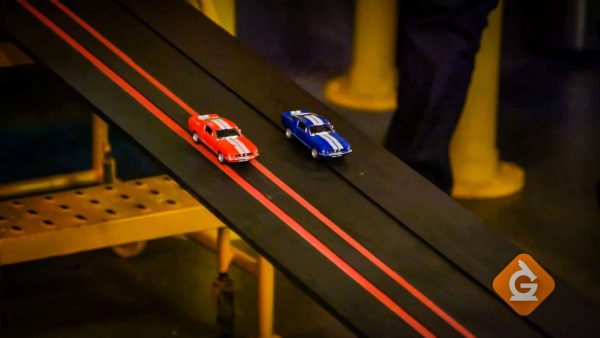Friction Definition
Friction is the force resisting motion. It slows things down.
View Lesson on Patterns of Motion & Friction
Become a member to get full access to our entire library of learning videos, reading material, quiz games, simple DIY activities & more.
Become a member to get full access to our entire library of learning videos, quiz games, & more.
Plans & Pricingto watch this full video.

Access All Videos
and Lessons, No Limits.
Access All Videos

No credit card required,
takes 7 sec to signup.
No card required

Ready-to-go lessons
that save you time.
Ready-to-go lessons
If you are on a school computer or network, ask your tech person to whitelist these URLs:
*.wistia.com, fast.wistia.com, fast.wistia.net, embedwistia-a.akamaihd.net
Sometimes a simple refresh solves this issue. If you need further help, contact us.
Patterns of Motion & Friction
Fun Facts
- Friction makes a book sliding across the floor come to a stop.
- Air hockey tables have very little friction due to air preventing puck contact.
- Bowling lanes are coated with oil to reduce friction for smoother ball slides.
Why Do We Need To Know About Friction
Learning about friction helps us see why it’s important in our everyday lives and in different jobs. For example, car designers use knowledge about friction to make tires that grip the road well, which makes cars safer to drive. This knowledge helps avoid crashes and makes cars work better.
In designing planes, making them more streamlined to lower friction helps them use less fuel and fly faster. Also, knowing about friction in daily life, like using oil to stop squeaks or understanding why pencils become dull, gives us useful tips for solving common problems.
Frequently Asked Questions
Check out the Full Lesson on Patterns of Motion & Friction
In this lesson, we learn that:
- A pattern of motion is the repeated process of an object moving.
- Patterns of motion can be used to make predictions.
- When one surface rubs against another we get friction.
- Friction slows things down.
Related Topics
- Analog Signal Definition
- Astronomy Definition
- Biotechnology Definition
- Competition Definition
- Continental Drift Definition
- Definition Of Non-living Things
- Digital Signal Definition
- Earth’s Axis Definition
- Earth’s Rotation Definition
- Electric Charge Definition
- Electric Field Definition
- Endoskeleton Definition
- Engineering Definition
- Extinct Definition
- Fertilizer Definition
- Food Web Definition
- Friction Definition
- Gas Definition
- Geologic Time Scale Definition
- Germination Definition
- Greenhouse Effect Definition
- Group Behavior Definition
- Inclined Plane Definition
- Invasive Species Definition
- Kuiper Belt Definition
- Larvae Definition
- Latitude Definition
- Lunar Eclipse Definition
- Metamorphosis Definition
- Multicellular Definition
- Muscular System Definition
- Nervous System Definition
- Parasitism Definition
- Pendulum Definition
- Phases Of The Moon Definition
- Physical Change Definition
- Push Definition
- Rain Definition
- Rock Definition
- Sediment Filter Definition
- Solar System Definition
- Sound Definition
- Star Definition
- Symbiosis Definition
- Taxonomy Definition
- Thermometer Definition
- Total Eclipse Definition
- Wind Erosion Definition


Start a Free Trial Today. Get a $5 Amazon Gift Card!
Teachers! Start a free trial & we'll send your gift card within 1 day. Only cards left. Try it now.
Select Grade
Select Subject
This email is associated with a Science Kit subscription. Kit subscriptions are managed on this separate page: Manage Subscription

-
Download InvoiceScience & Math$/yr
-
Download InvoiceScience Only$/yr

access all lessons
• No credit card required •
"My students loved the videos. I started the video subscription in May and used them as a review before the state test, which I know contributed to 100% of my class passing the state test."
Rhonda Fox 4th Grade Teacher, Ocala, Florida
Use Generation Genius in Your School
Access all lessons free for 30 days.
"My students loved the videos. I started the video subscription in May and used them as a review before the state test, which I know contributed to 100% of my class passing the state test."
Rhonda Fox 4th Grade Teacher, Ocala, Florida
• No credit card required •
Already a member? Sign In
* no credit card required *

* no credit card required *
* no credit card required *

Get District Quote
Discounts start at 3 schools.
Sent!
Thank you for your inquiry.
We will email you a quote as soon as we can.

to Discover the Benefits of Generation Genius
Learn How to Save for Your School & District!
Please login or create an account to access additional resources

no credit card required
Skip, I will use a 3 day free trial
Enjoy your free 30 days trial
-
Unlimited access to our full library
of videos & lessons for grades K-5. -
You won’t be billed unless you keep your
account open past your 14-day free trial. -
You can cancel anytime in 1 click on the
manage account page or by emailing us.
-
Unlimited access to our full library of videos & lessons for grades K-5.
-
You won't be billed unless you keep your account open past 14 days.
-
You can cancel anytime in 1-click on the manage account page.
Cancel anytime in 1-click on the manage account page before the trial ends and you won't be charged.
Otherwise you will pay just $10 CAD/month for the service as long as your account is open.
Cancel anytime on the manage account page in 1-click and you won't be charged.
Otherwise you will pay $10 CAD/month for the service as long as your account is open.
We just sent you a confirmation email. Enjoy!
Done



























































































































 GENERATION GENIUS
GENERATION GENIUS